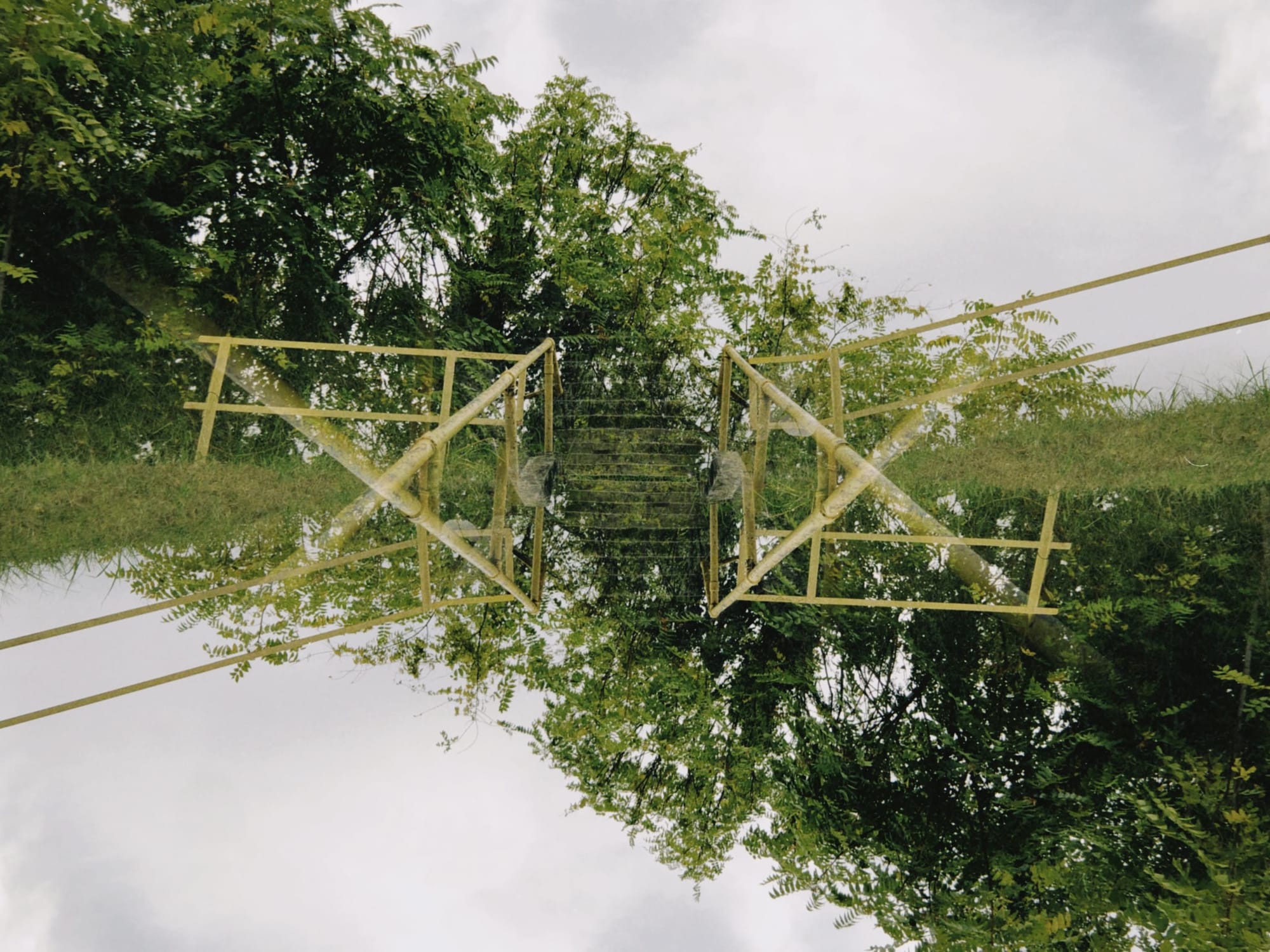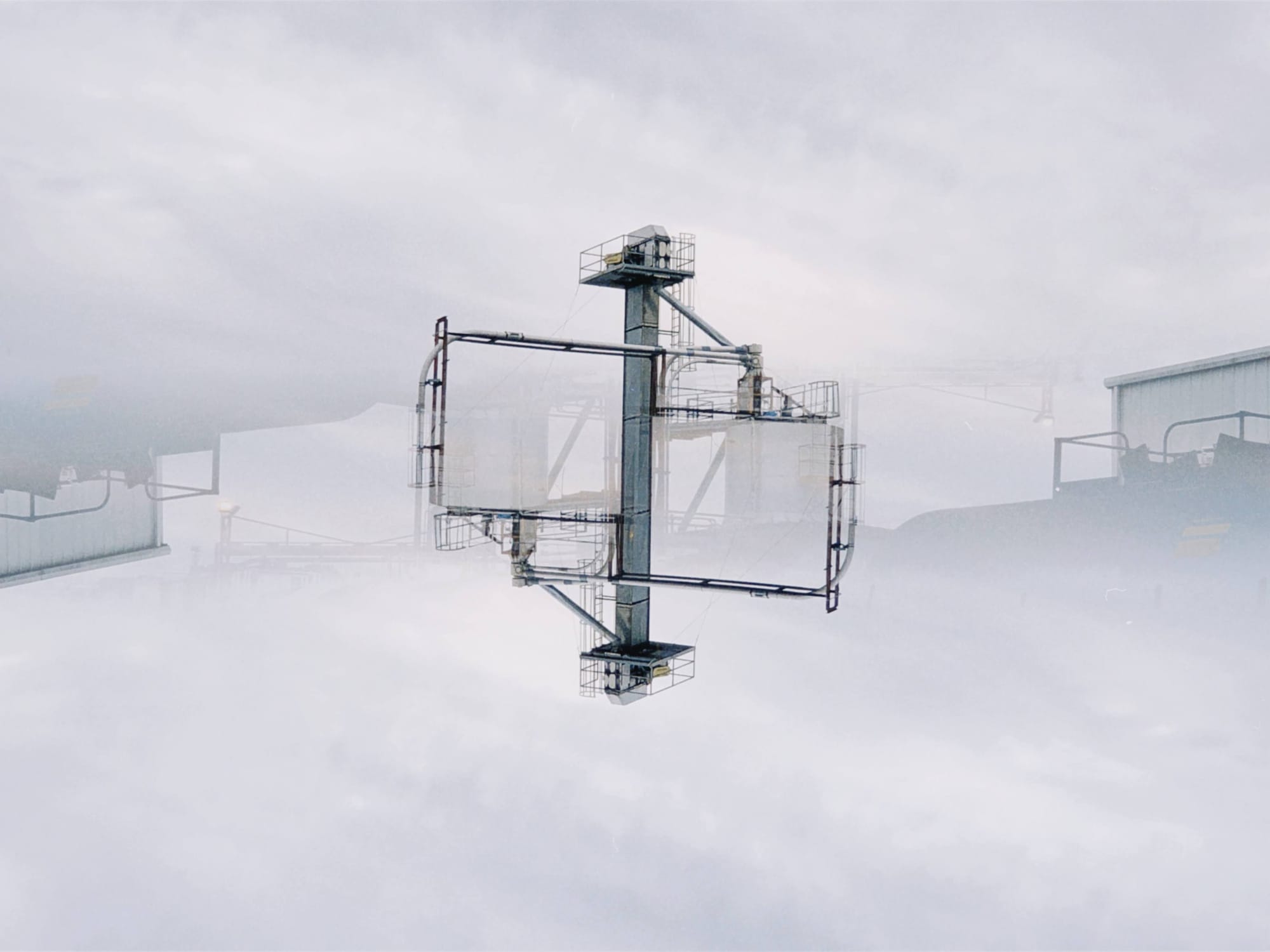Embodied Horizons: Broadening Perception in a Screen-Saturated World
This essay explores the complex interplay between technology, movement, and environment.

In Dippold the Optician, a short vignette from Edgar Lee Masters' Spoon River Anthology (1915), we are reminded of the intricate relationship between perception and understanding. The character muses on the lenses through which we view our world, each shift revealing new dimensions and insights.
What do you see now?
Globes of red, yellow, purple.
Just a moment! And now?
My father and mother and sisters.
Yes! And now?
Knights at arms, beautiful women, kind faces.
Try this.
A field of grain – a city.
Very good! And now?
A young woman with angels bending over her.
A heavier lens! And now?
Many women with bright eyes and open lips.
Try this.
Just a goblet on a table.
Oh I see! Try this lens!
Just an open space – I see nothing in particular.
Well, now!
Pine trees, a lake, a summer sky.
That’s better. And now?
A book.
Read a page for me.
I can’t. My eyes are carried beyond the page.
Try this lens.
Depths of air.
Excellent! And now?
Light, just light, making everything below it a toy world.
Very well, we’ll make the glasses accordingly.
On stage, this piece is often blocked by two actors—one reading the optician, the other a person being fitted for glasses—both facing the audience, with no direct interaction between them. This interplay between vision, cognition, and imagination invites us to consider the significance of perspective in shaping our experiences, proposing that our understanding is guided not merely by what we see, but by how we choose to see it.

My work as an innovation facilitator and service designer at a fully remote organization is primarily digital, often confined within screens that demand such unwavering attention that it becomes all too easy to forget the world beyond them. The ability to choose my environment—be it a bustling coffee shop or the serenity of my family’s farm—has been liberating, but this also comes at a cost. The absence of in-person colleagues means a lack of relational capacity for creativity. There are days when I finally tear my eyes away from the screen and notice I’m surrounded by dirty dishes, empty mugs saturated with tea leaves, and scraps of paper with scribbled notes on them. The walls of my workspace blur with the borders of my home, making it challenging to distinguish between professional duties and personal life.
I am not alone in these struggles. A 2023 Forbes article highlights that while 98% of workers wish to work remotely for the flexibility and balance it offers, many face burnout due to the constant demands of digital communication tools like emails, chat platforms, and video calls. Over half of these workers find it harder to form genuine relationships with colleagues, feeling isolated despite being constantly connected. Yet, it would be irresponsible to overlook the significant world-building and world-expanding power of the internet. It provides opportunities and genuine connections for many, especially disabled workers who may find traditional office environments inaccessible, rural workers who might lack local job options, and transcultural artists who can share their work and collaborate globally. Within our diverse community of remote workers, we confront this paradox daily.
The exploration of somatics reveals profound insights into the interplay between our physiological states and our lived experiences as on-screen workers. Neuroscience confirms that our bodies retain memories and responses to stressors, with the autonomic nervous system playing a pivotal role in how we react to environmental stimuli. In an ever-connected, technology-saturated world, individuals frequently experience overwhelming sensory input, which can lead to a freeze response—an instinctive reaction often rooted in survival mechanisms. This freeze response occurs when the nervous system becomes inundated with information or perceived threats, resulting in a state of immobility or dissociation. What was once an evolutionary survival strategy can now be triggered by an influx of emails and chat notifications while we sit still at a desk.
Consequently, while technology facilitates communication and access to information, it also risks compromising our embodied awareness, leaving us feeling disconnected and emotionally numbed. Understanding this dynamic invites a re-evaluation of our relationship with technology and an opportunity to cultivate practices that foster somatic awareness and emotional resilience.

Dr. Marni Bessler's insights into behavioral optometry provide a thought-provoking perspective on how we might achieve this. Although often dismissed as pseudoscience, the field's core idea is compelling: our eyes are more than sensory organs; they shape our perception of the world. The way we visually process information influences our broader worldview.
For instance, individuals who naturally prefer a narrow focus, turning their heads to keep their desired view centered, may exhibit behaviors characterized by targeted attention, detail-orientation, and directness. On the other hand, individuals whose eyes gravitate to their peripheral field of vision might take a "forest-for-the-trees" approach. They may excel at grasping the bigger picture, show openness to new ideas, and embrace nonlinear thinking and communication patterns. In essence, our visual habits influence how we engage with ourselves, each other, and the world around us. One of these ways of seeing the world is not better than the other, and in fact, we each need to build our capacity to move fluidly between them. There are times when we need to seek the center and hone our attention to detail, and there are times when we need to seek the edge and consider the broad view.
For remote workers, the majority of our time is spent engaging with screens positioned centrally in our visual field. Increased screen time confines our field of vision which, according to Dr. Bessler, may then narrow our perspective and limit our capacity for new ways of doing and being. Even those who don't work remotely may feel the effects of this via personal technology use, especially those who spend large amounts of time on computers, smartphones, or tablets. How might rampant social media use be furthering relational divides via our visual processing system? How might our engagement with smartphones be closing down our opportunities for connection, even when our loved ones are a click away? How might widening broadband access be collapsing our relational capacities, even while offering the world on a silver platter? What might we be missing out on?

Within many organizations, especially those focused on expanding social impact and influence, the Three Horizons Framework—first introduced by McKinsey in 1999—is an often-adopted metaphor for organizational innovation, growth, and strategic planning toward a desired future state. This framework urges leaders to explore both present realities and inchoate possibilities, recognizing that true progress stems from a balance of maintaining current operations while exploring new avenues for advancement. As organizations adopt this model, the individuals within them are called to embody these three horizons, moving the collective organizational body into a shared vision for the future.
Writing in "The Metaphors We Live By," Lakoff and Johnson elucidate how metaphors shape our understanding and experiences of the world, underscoring the profound impact that language and conceptual frameworks have on our thought processes. The Three Horizons Framework resonates deeply with their assertion, as it employs metaphorical thinking to guide organizational and professional growth. Just as the horizons symbolize potential futures, Lakoff and Johnson argue that metaphors inherently influence our expectations and actions. By embracing the horizon as a dynamic metaphor, we not only envision possibilities but also clarify our motivations and agency in enacting strategic decisions. This intersection of metaphor and practice illuminates how our conceptual frameworks—whether in business or personal realms—serve as both lenses and guiding principles, urging us to remain open to exploration while staying grounded in our present realities.
As professionals, we do this by challenging our existing beliefs and practices and being open to new ideas and perspectives. We must attune ourselves to the subtle nuances of existence, recognizing that innovation often arises from unexpected places. Only by doing so can we truly broaden our horizons, not merely as remote workers isolated by distance, but as whole, interconnected beings who contribute to a larger, dynamic system of creativity and worldmaking.

Our visual and perceptual fields extend in a sphere around us through three anatomical planes: the frontal plane, which allows for movement and analysis of structures in relation to one another from a head-on perspective; the sagittal plane, which is essential for activities such as walking or running; and the transverse plane, which is crucial for rotational movements. Understanding these planes enhances our ability to coordinate and perceive our physical interactions within our environments.
Tech-enabled workers are often encouraged to take breaks to reduce eyestrain, but disrupting our day-to-day patterns to engage with the world through all three of these planes can also improve capacities for creativity, relationship building, adaptability, and problem-solving.
We can presence into the first horizon by honing our attentional capacity, limiting distractions, and tending to our sensorial environment.
We can extend into the second horizon by exploring our peripheral field of vision, physically stretching our eyes to the top, bottom, left, and right edges. We can disrupt the pattern of sitting still to dance, go for a walk, or play in unexpected ways.
We can gesture toward the third horizon by looking as far into the physical distance as possible, out the window or around the natural environment. We can walk, run, or reach toward it, changing directions, adapting to the landscape beneath us, and uncovering new possibilities.
In the contemporary landscape of remote work, where technology mediates our experiences, it is vital to cultivate practices that foster both personal and interpersonal connections. For example, I attend a weekly improvisational dance class and those in attendance move together for 90 minutes. We walk around the studio seeking open space, moving in relation to each other, forming and dissolving an ensemble. In this weekly retreat from my daily, screen-oriented existence, I remember that I have a body and other people have bodies, too. We co-create together in new ways. Additionally, I try to call into meetings that require deep listening as this allows me to move away from my laptop screen and either sit outside or go for a walk. If I’m really stuck on a problem or frazzled by the day’s notifications, I find that moving my body in whatever way feels accessible to me in the moment almost always unblocks the parts that feel stickiest. These rituals have, without doubt, expanded my professional capacity to facilitate creative experiences, generate novelty, and build connections with my coworkers across the country.

In the opening scene of his eponymous documentary, Brian Eno presses play on a thrumming soundscape. But it's missing something, he says, a horizon: "I want a sky. What else do I want in this world?"
Our sensory perceptions of ourselves, our colleagues, and the spaces around us—both virtual and physical—are gestures of worldmaking. These perceptions shape our realities, influencing how we interact and engage with our environments and who we share these spaces with.
Extend your vision to a far edge of the pale horizon. Imagine the possibilities that lie beyond the visible boundaries. What new experiences or connections could enrich your life, broadening your understanding of the future forming around you? What else do you want in this world?
